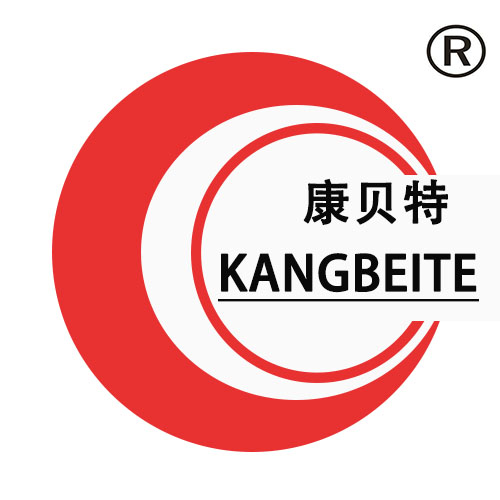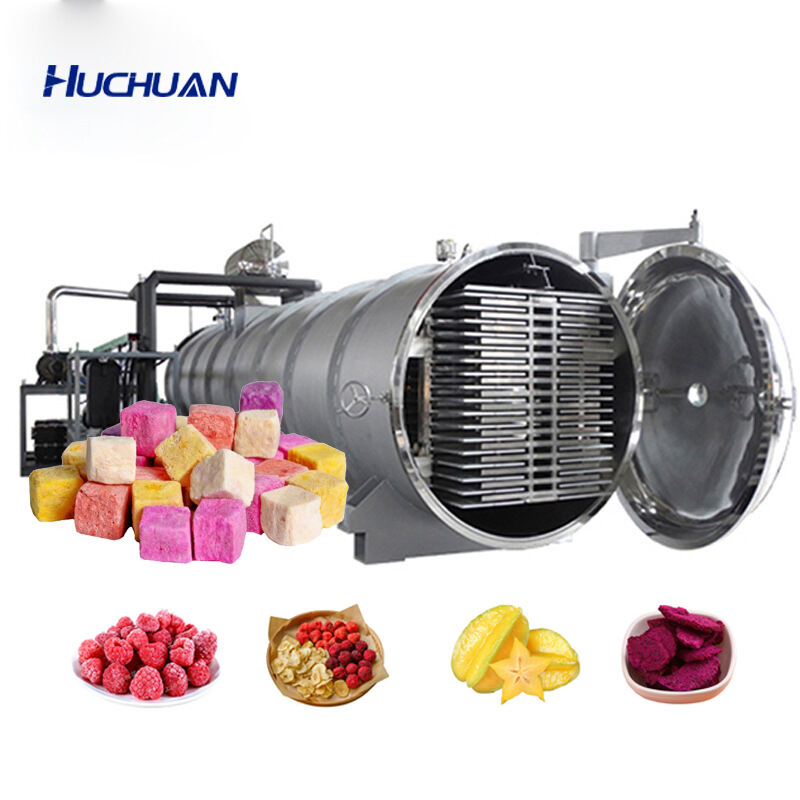Understanding the Fundamentals of Lyophilization Technology
What is a lyophilizer and how does it enable long-term preservation?
Lyophilizers, commonly called freeze dryers, keep sensitive materials safe by taking out most of their moisture content, usually around 95 to 99 percent. This happens in three main steps: first freezing the material, then primary drying where ice turns straight into vapor without becoming liquid, followed by secondary drying that removes any remaining bound water molecules. What makes this technique so effective is how it keeps the original molecular makeup intact during processing. When water activity drops below 0.2 levels, there's hardly any chance for bacteria to grow or chemicals to break down. That's why products preserved through lyophilization can last way longer than regular ones. Some vaccines stored this way remain stable for over 25 years on shelves, which has been proven time and again in various research projects across the pharmaceutical industry.
The scientific basis of lyophilization in industrial applications
The process leverages thermodynamic principles to balance temperature, pressure, and mass transfer. At industrial scales, precise control preserves:
- Structural integrity of proteins and biologics
- Bioavailability of active pharmaceutical ingredients (APIs)
- Flavor and aroma compounds in food extracts
| Preservation Method | Avg. Shelf Life | Structural Preservation | Energy Cost |
|---|---|---|---|
| Lyophilization | 15–25 years | >95% | High |
| Refrigeration | 1–5 years | 70–80% | Medium |
| Air Drying | 6–18 months | 40–60% | Low |
Pharmaceutical manufacturers prioritize lyophilization for biologics requiring stringent stability, with 78% of monoclonal antibody therapies relying on this technology (PharmaTech 2023). Controlled water removal prevents collapse of delicate molecular matrices, a principle established in foundational freeze-drying research from the 1960s.
Freezing Phase: Establishing Product Structure for Effective Drying
Importance of Controlled Nucleation and Freezing Rate in a Lyophilizer
Freezing starts when we get proper control over how those tiny ice crystals form. When nucleation isn't controlled properly, things get messy because supercooling happens at different rates throughout the batch, and this messes up the final product quality. Keeping the temperature dropping steadily around 1 degree Celsius per minute makes those pores inside smaller and more uniform across the board. Research from a study back in 2019 showed this approach cuts down on pore size differences by about 40 percent, making the drying process work much better overall. The findings were published in the Journal of Pharmaceutical Sciences if anyone wants to check the details.
Impact of Ice Crystal Formation on Final Product Integrity
The size and how ice crystals are spread out really affects how porous the freeze dried material becomes. When freezing happens slowly, bigger ice crystals form these big holes called macropores. These actually help with the sublimation process but can be tough on delicate proteins. On the flip side, quick freezing leads to smaller crystals which keep the molecular structure intact. However, this comes at a cost since it makes it harder for vapor to move through the material. Interesting thing is when there's more than a 5% variation in crystal sizes across the sample, people tend to see about a 20% longer wait time before the product fully reconstitutes. This relationship between crystal formation and processing time remains important for optimizing freeze drying techniques.
Fast vs. Slow Freezing: Trade-offs Between Efficiency and Quality
| Freezing Method | Ice Crystal Size | Drying Efficiency | Product Integrity Risk |
|---|---|---|---|
| Fast (<2°C/min) | Small (<50 µm) | -15% drying time | Low (<5% degradation) |
| Slow (>0.5°C/min) | Large (>100 µm) | +25% efficiency | Moderate (10–15% risk) |
Slow freezing is preferred for heat-sensitive vaccines, while fast freezing suits stable small-molecule drugs. Over 60% of biopharma manufacturers now use adaptive freezing protocols guided by real-time thermal analytics to optimize both quality and efficiency.
Primary Drying (Sublimation): Removing Ice Under Vacuum Conditions
How Sublimation Removes Ice While Preserving Product Structure
Industrial freeze dryers work by turning ice directly into vapor through a process called sublimation, which dries out frozen stuff while keeping its original shape intact. These machines need to keep the pressure really low, around 4.58 millibar or less, since that's basically where water stops being solid, liquid, or gas all at once. The whole setup helps maintain the cell structures in biological products and stops those sensitive pharmaceuticals from collapsing when they get too hot. Researchers have actually checked this out using special microscopes that can look at samples at super cold temperatures during the drying process.
Role of Shelf Temperature and Chamber Pressure in Sublimation Efficiency
Shelf temperature (-30°C to +30°C) and chamber pressure (10–200 mTorr) are tightly controlled to balance drying speed and product quality. Higher shelf temperatures improve heat transfer but must remain below the product’s collapse temperature. Pressure adjustments regulate vapor flow, with 50–100 mTorr proving optimal for most protein-based therapeutics.
Data Insight: Sublimation Accounts for 90–95% of Total Drying Time in Industrial Lyophilizers
Sublimation dominates the lyophilization timeline, with vaccine production cycles requiring 48–72 hours for primary drying compared to 4–8 hours for secondary drying. The energy demand arises from maintaining vacuum while removing up to 1 kg of ice per hour—consuming 1,200–1,500 kWh per batch in large-scale units.
Case Study: Enhancing Sublimation Rates in Vaccine Production With SMART Cycle Technology
A lyophilizer manufacturer implemented sensor-mediated adaptive pressure regulation (SMART) to improve sublimation efficiency in mRNA vaccine production. Real-time vapor flow monitoring reduced primary drying time by 34%, achieving residual moisture below 1% and antigenicity recovery above 98%. This innovation cut energy costs by $18,000 per batch without compromising sterility.
Secondary Drying (Adsorption): Achieving Ultra Low Moisture Content
Removing Bound Water Through Desorption to Ensure Stability
In the secondary drying stage, shelves get heated up somewhere between 25 and maybe 40 degrees Celsius to take out that stubborn chemically bound water. What we're really after here is getting rid of that last bit of moisture left behind after sublimation, typically around 5 to 10 percent. If this stuff stays put, it can actually start breaking down proteins or speed up unwanted chemical changes. Primary drying works differently from what happens now. During this phase, we break those hydrogen bonds by carefully controlling the heat while maintaining a vacuum below 100 microns of pressure. Slowly increasing the temperature helps make sure moisture escapes evenly throughout all the vials, which is super important because otherwise these delicate biological materials might just fall apart structurally.
Temperature Ramping and Its Effect on Residual Moisture Levels
Research from 2023 across twelve drug manufacturing sites showed that temperature profiles increasing by 2 degrees Celsius every half hour reached less than 0.5% moisture content forty percent quicker compared to traditional fixed temperature approaches. Going overboard with heat beyond 45 degrees can actually ruin those precious monoclonal antibodies we rely on so much these days. On the flip side, keeping things too cool under twenty degrees just prolongs the whole process without any real benefit. Today's advanced equipment incorporates smart prediction software that tweaks temperature changes according to actual moisture readings as they happen, finding that sweet spot between getting things done fast enough but still maintaining product quality standards in the lab.
Case Study: Optimizing Moisture Content in Monoclonal Antibody Formulations
A biopharmaceutical manufacturer improved its antibody therapy by optimizing secondary drying: a 32°C hold followed by 0.8°C/minute ramping to 40°C reduced residual moisture from 1.2% to 0.6% across 20,000-vial batches. This change decreased reconstitution time by 33%, eliminated the need for post-lyophilization stabilizers, and saved $2.8 million annually while maintaining ±98% protein monomericity.
Trend: Real-Time Moisture Monitoring Using Tunable Diode Laser Absorption Spectroscopy
Top makers of freeze dryers are starting to put TDLAS sensors into their machines these days. These sensors check moisture levels every 15 seconds when the product is going through secondary drying, which is actually about 90 percent faster than what people used to do manually. The neat thing about this method is that it doesn't damage anything while measuring tiny amounts of water vapor down to 0.01%, thanks to some nifty near infrared absorption tech. And because they can see what's happening so quickly, operators can tweak things right away if needed. Companies that jumped on board early tell us they've seen some pretty good results too. They mention around 22% less rejected product batches and their drying cycles take about 15% less time overall compared to just relying on clock time to decide when something is done.
Process Integration and Control in Industrial Lyophilizers
Sequencing Freezing, Primary Drying, and Secondary Drying for Optimal Results
Getting good results from a lyophilizer depends heavily on proper phase sequencing. The 2023 Lyophilization Optimization Report actually points out that about one in four failed batches happens because of messed up transitions between phases. Most manufacturers now rely on heat transfer models to figure out when sublimation is done before starting secondary drying. They wait until the ice content gets down to around 3% or lower. This smarter approach cuts down overall processing time somewhere between 18 and 22 percent compared to those old fixed time methods. Plus it keeps residual moisture levels at half a percent or less in biological products, which matters a lot for product quality and shelf life.
Automation and PAT (Process Analytical Technology) in Modern Lyophilization Systems
Modern systems integrate PAT tools such as manometric temperature measurement and near-infrared (NIR) sensors to support real-time decision-making:
- Dynamic pressure control adjusts vacuum levels ±5 mTorr to maintain optimal sublimation rates
- Auto-defrost cycles activate when condenser efficiency falls below 85%
- Cloud-based data logging records over 120 parameters per batch for FDA 21 CFR Part 11 compliance
The FDA’s 2022 guidance on advanced process controls notes that PAT-equipped lyophilizers reduce out-of-specification results by 41% in vaccine production.
Strategy: Designing Robust Cycles Using Quality by Design (QbD) Principles
QbD methodologies link critical quality attributes (CQAs) to controllable lyophilizer parameters:
| CQA | Process Parameter | Control Range |
|---|---|---|
| Reconstitution Time | Freezing Rate | 0.5–1.5°C/min |
| Residual Solvents | Secondary Drying Duration | 4–8 hrs at 25–40°C |
| Protein Aggregation | Sublimation Pressure | 50–150 µbar |
A 2023 study showed that QbD-optimized cycles achieve 99.3% first-pass success rates for monoclonal antibodies, compared to 76% with empirical methods.
Table of Contents
- Understanding the Fundamentals of Lyophilization Technology
- Freezing Phase: Establishing Product Structure for Effective Drying
-
Primary Drying (Sublimation): Removing Ice Under Vacuum Conditions
- How Sublimation Removes Ice While Preserving Product Structure
- Role of Shelf Temperature and Chamber Pressure in Sublimation Efficiency
- Data Insight: Sublimation Accounts for 90–95% of Total Drying Time in Industrial Lyophilizers
- Case Study: Enhancing Sublimation Rates in Vaccine Production With SMART Cycle Technology
- Secondary Drying (Adsorption): Achieving Ultra Low Moisture Content
- Process Integration and Control in Industrial Lyophilizers

